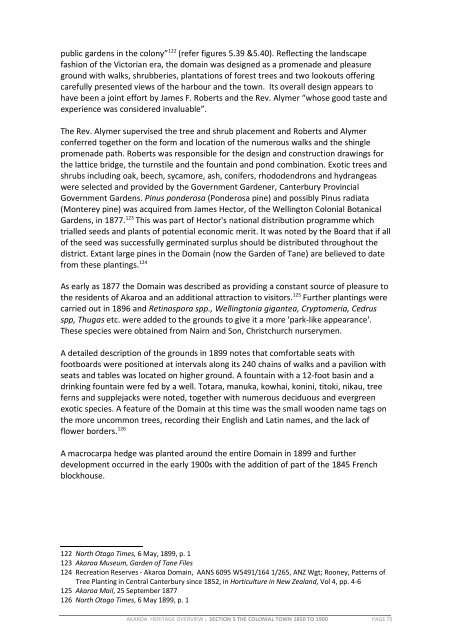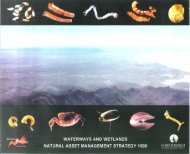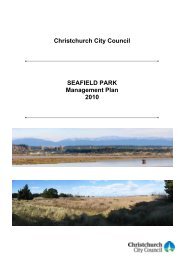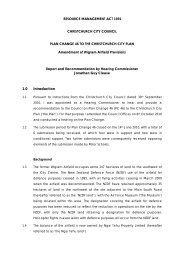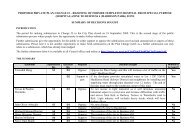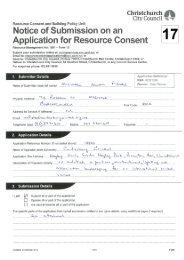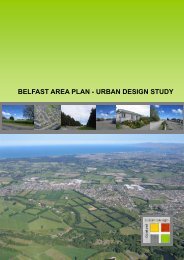Akaroa Historical Overview - Christchurch City Council
Akaroa Historical Overview - Christchurch City Council
Akaroa Historical Overview - Christchurch City Council
You also want an ePaper? Increase the reach of your titles
YUMPU automatically turns print PDFs into web optimized ePapers that Google loves.
public gardens in the colony” 122 (refer figures 5.39 &5.40). Reflecting the landscape<br />
fashion of the Victorian era, the domain was designed as a promenade and pleasure<br />
ground with walks, shrubberies, plantations of forest trees and two lookouts offering<br />
carefully presented views of the harbour and the town. Its overall design appears to<br />
have been a joint effort by James F. Roberts and the Rev. Alymer “whose good taste and<br />
experience was considered invaluable”.<br />
The Rev. Alymer supervised the tree and shrub placement and Roberts and Alymer<br />
conferred together on the form and location of the numerous walks and the shingle<br />
promenade path. Roberts was responsible for the design and construction drawings for<br />
the lattice bridge, the turnstile and the fountain and pond combination. Exotic trees and<br />
shrubs including oak, beech, sycamore, ash, conifers, rhododendrons and hydrangeas<br />
were selected and provided by the Government Gardener, Canterbury Provincial<br />
Government Gardens. Pinus ponderosa (Ponderosa pine) and possibly Pinus radiata<br />
(Monterey pine) was acquired from James Hector, of the Wellington Colonial Botanical<br />
Gardens, in 1877. 123 This was part of Hector's national distribution programme which<br />
trialled seeds and plants of potential economic merit. It was noted by the Board that if all<br />
of the seed was successfully germinated surplus should be distributed throughout the<br />
district. Extant large pines in the Domain (now the Garden of Tane) are believed to date<br />
from these plantings. 124<br />
As early as 1877 the Domain was described as providing a constant source of pleasure to<br />
the residents of <strong>Akaroa</strong> and an additional attraction to visitors. 125 Further plantings were<br />
carried out in 1896 and Retinospora spp., Wellingtonia gigantea, Cryptomeria, Cedrus<br />
spp, Thugas etc. were added to the grounds to give it a more 'park-like appearance'.<br />
These species were obtained from Nairn and Son, <strong>Christchurch</strong> nurserymen.<br />
A detailed description of the grounds in 1899 notes that comfortable seats with<br />
footboards were positioned at intervals along its 240 chains of walks and a pavilion with<br />
seats and tables was located on higher ground. A fountain with a 12-foot basin and a<br />
drinking fountain were fed by a well. Totara, manuka, kowhai, konini, titoki, nikau, tree<br />
ferns and supplejacks were noted, together with numerous deciduous and evergreen<br />
exotic species. A feature of the Domain at this time was the small wooden name tags on<br />
the more uncommon trees, recording their English and Latin names, and the lack of<br />
flower borders. 126<br />
A macrocarpa hedge was planted around the entire Domain in 1899 and further<br />
development occurred in the early 1900s with the addition of part of the 1845 French<br />
blockhouse.<br />
122 North Otago Times, 6 May, 1899, p. 1<br />
123 <strong>Akaroa</strong> Museum, Garden of Tane Files<br />
124 Recreation Reserves - <strong>Akaroa</strong> Domain, AANS 6095 W5491/164 1/265, ANZ Wgt; Rooney, Patterns of<br />
Tree Planting in Central Canterbury since 1852, in Horticulture in New Zealand, Vol 4, pp. 4-6<br />
125 <strong>Akaroa</strong> Mail, 25 September 1877<br />
126 North Otago Times, 6 May 1899, p. 1<br />
AKAROA HERITAGE OVERVIEW : SECTION 5 THE COLONIAL TOWN 1850 TO 1900 PAGE 75


